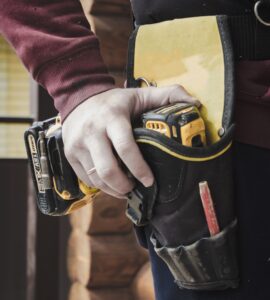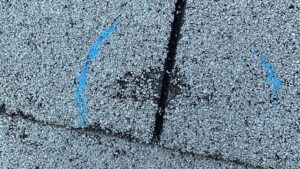The roof of your home sustains significant structural damage after a storm passes through the area. You’re relieved that your family is safe, but what about insurance coverage? Typically, such occurrences are accidental or unavoidable, and your homeowner’s insurance policy may cover them. However, when working with your insurance provider, you must be aware of your rights. Unbeknownst to many, your homeowner’s insurance is required to provide you with the same level of product quality that existed prior to the incident. What happens if they are unable to do so? The following information pertains to matching laws.
How Does Matching Law Work for Roof Installation?
Some states have similar legislation. This law reduces the likelihood that your home will be unsightly. How is that possible? Consider the following case.
Suppose the insurance company agrees that it is responsible for making roof repairs. However, the roofing contractor is unable to find a product that matches the color and material of your existing roof. The manufacturer may no longer exist, or it may no longer offer the color you currently possess.
In states without a corresponding statute, property owners have no legal protection. The insurance company may attempt to locate a suitable substitute and use it. That does not occur in a matching state such as Minnesota. In a state with a matching law, the insurer must pay to: Match the new materials with the existing roof exactly as they were prior to the covered event OR Replace the entire roof.
If that is not possible, the insurance company must pay to replace the entire roof.
Typically, the new materials must match the old ones in terms of quality, size, and color, creating a uniform appearance as if nothing had happened to the structure.
How Similar Legislation Can Help You Pay for a New Roof
When restoring a home’s roof to its pre-event condition, an insurance company will choose the least expensive method whenever possible. This means that if a portion of the roof can be repaired rather than replaced, they will only pay for the roof repair.
Nevertheless, this is not always possible. Occasionally, the existing materials on a home cannot be located, so the insurance company must pay to have the entire roof replaced instead of just paying for repairs.
When Can Matching Laws Be Useful for Roof Repairs?
Determine first whether your insurance policy covers the incident. Many homeowner’s insurance policies cover roof damage resulting from a sudden and accidental loss. Common types of dangers that may result in this include:
- Fire damage
- Smoke damage
- Hail damage
- Some water damage
- Strikes from falling storm debris
In these instances, the insurance company will require an inspection of the roof damage to determine if coverage applies.
Keep in mind that if the damage is not caused by one of the incidents listed above, the insurance company has no obligation to pay. The insurance company will not cover this loss, for instance, if the roof has extensive deterioration due to age or lack of maintenance.
If the roof damage is covered, insurance policies frequently contain a provision (or corresponding laws may apply) stating that the insurer must pay to repair or replace the damaged property with “like kind and quality” or “similar material.”
What Roofing Materials are Available?
Your roofing company will collaborate with the insurance company to inspect the roof and determine whether or not roof repairs are possible. The roofing company will then attempt to locate the same roofing material you currently have on your home. If possible, they will purchase the item and make any necessary repairs.
Occasionally, this is not possible because there is no exact color or size match for the roofing material. When the roofing company is unable to provide a matching material, they will notify the insurance company. The insurance company may then conduct research to determine whether this is the case. In this case, the insurance company may determine that the entire roof must be replaced and will cover a roof installation.
A New Roof Is a Huge Advantage
It is generally beneficial for the property owner to have the entire roof replaced. On some larger residences, this may be a project worth $10,000 or more. If the insurance company decides to replace the roof, you do not have to worry about the cost of replacing the roof of your home in the future. Your home will have a new roof to protect it from the elements, as the majority of roofs have a lifespan of decades. The insurance company will only pay for what is necessary and will pay for the same material – you may be able to pay out of pocket for additional upgrades, such as a higher-quality roof, if you so choose.
Also note that installing a new roof increases the value of your home. Simply patching a repair could result in an unattractive difference in shading or color, making the repair obvious. That could decrease your home’s value. However, a new roof eliminates this issue, and it could be a significant selling point.
Using Matching Laws when making an insurance claim for a roof installation
If you suspect that your insurance company will cover damage to your roof, your first step should be to contact a roofing contractor. Permit the contractor to conduct a roof inspection, and then work with your insurance company to address the necessary roof repairs and secure your home. Even if a complete roof replacement is not possible, it is always advantageous for property owners to have a licensed roofing professional handle repairs.





